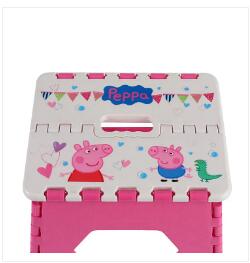What materials are best for step stools?
2024-10-22
When choosing materials for step stools, it's essential to consider factors like durability, weight capacity, stability, and purpose. Different materials offer various benefits, depending on the intended use of the step stool, whether it's for home, industrial, or portable use. Here are some of the best materials for step stools:
1. Wood
- Durability: Wood is a strong and sturdy material, making it ideal for step stools that need to support significant weight.
- Aesthetic: Wooden step stools are often favored for their natural and traditional look, which can complement home décor.
- Applications: Great for indoor use, especially in kitchens, bedrooms, or bathrooms. Commonly used in homes for both adults and children.
- Drawbacks: Can be heavier and prone to moisture damage if not properly sealed.

2. Aluminum
- Durability: Aluminum is lightweight yet strong and corrosion-resistant. It is durable enough to withstand regular use.
- Weight: Very light, making it easy to move or transport.
- Applications: Often used for portable and foldable step stools, ideal for both home and industrial settings.
- Drawbacks: May not be as aesthetically appealing for home décor but excellent for utility purposes.
3. Plastic
- Durability: Modern plastics, especially high-density polyethylene (HDPE), are strong, lightweight, and resistant to wear and tear.
- Weight: Extremely lightweight, which makes it easy to move, though sturdiness can vary depending on design.
- Applications: Perfect for indoor and outdoor use, commonly found in children’s step stools or portable designs. Plastic is also water-resistant, making it ideal for wet environments like bathrooms or outdoor areas.
- Drawbacks: Less durable compared to metal or wood under heavy loads, though high-quality plastic can still be quite strong.
4. Steel
- Durability: Steel step stools are extremely durable, with a high weight capacity. They are often powder-coated for rust resistance.
- Weight: Heavier than aluminum or plastic, but the weight adds to their stability and strength.
- Applications: Used in heavy-duty or industrial settings where a high weight capacity is required. Suitable for garage use, warehouses, and commercial spaces.
- Drawbacks: Heavier than other materials and may be more challenging to move around.
5. Fiberglass
- Durability: Fiberglass is strong, lightweight, and resistant to corrosion, chemicals, and electricity, making it extremely durable.
- Weight: Lightweight and easy to handle, similar to aluminum.
- Applications: Commonly used in industrial step stools, particularly in environments where electrical insulation is important, such as construction or electrical work.
- Drawbacks: Typically more expensive than plastic or metal options and may not be as readily available for household use.
6. Bamboo
- Durability: Bamboo is a sustainable and eco-friendly material that is surprisingly strong and durable when treated properly.
- Aesthetic: Bamboo step stools have a natural and clean look, making them popular for home use.
- Applications: Ideal for indoor use, particularly in kitchens, bathrooms, and children’s rooms.
- Drawbacks: Like wood, bamboo can be susceptible to water damage and may require special care to maintain its appearance.
---
Conclusion
The best material for a step stool depends on your specific needs:
- For household use with an aesthetic focus, wood or bamboo are excellent options.
- For portability and ease of movement, aluminum and plastic are ideal due to their lightweight nature.
- For heavy-duty use or industrial environments, steel and fiberglass provide the durability and strength required for higher loads and rough handling.
Each material has its strengths and weaknesses, so choosing the right one depends on the intended use, environment, and personal preferences.


